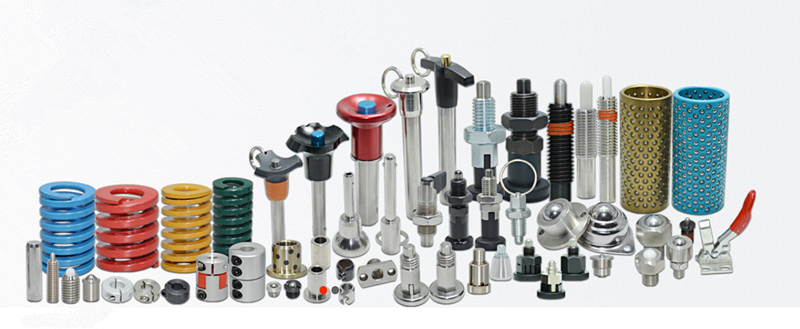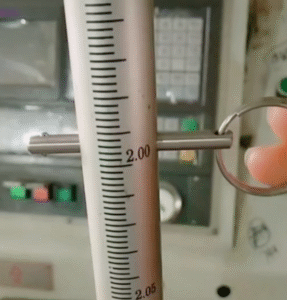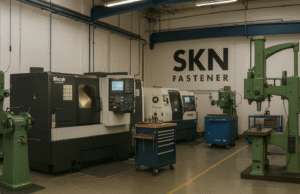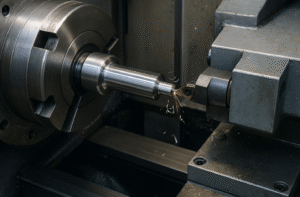Ένας απλός οδηγός για τον μηχανισμό, τον σχεδιασμό και τα βιομηχανικά οφέλη
Οι πείροι ταχείας απελευθέρωσης είναι ένα μικρό εξάρτημα με μεγάλο ρόλο στη βιομηχανική απόδοση. Χρησιμοποιούνται συνήθως σε τομείς που κυμαίνονται από την αεροδιαστημική και την αυτοκινητοβιομηχανία έως τη μεταποίηση και τον ιατρικό εξοπλισμό, και επιτρέπουν στους χρήστες να κλειδώνουν, να απελευθερώνουν και να ευθυγραμμίζουν τα εξαρτήματα σε δευτερόλεπτα - χωρίς εργαλεία, σπειρώματα ή περίπλοκο υλικό.
Αλλά πώς λειτουργούν στην πραγματικότητα οι πείροι ταχείας απελευθέρωσης; Σε αυτό το άρθρο, θα αναλύσουμε τους εσωτερικούς μηχανισμούς, τους τύπους των συστημάτων ασφάλισης και τι τους καθιστά μια τόσο αξιόπιστη λύση για γρήγορη και ασφαλή στερέωση.
Τι είναι ο πείρος γρήγορης απελευθέρωσης;
Ο πείρος ταχείας απελευθέρωσης είναι ένας μηχανικός συνδετήρας που επιτρέπει την ταχεία και επαναλαμβανόμενη σύνδεση ή αποσύνδεση μεταξύ εξαρτημάτων. Σε αντίθεση με τα συνηθισμένα μπουλόνια ή βίδες, δεν απαιτεί σύσφιξη ή σπείρωμα, καθιστώντας τον ιδανικό για συστήματα που απαιτούν συχνή ρύθμιση ή γρήγορη αφαίρεση.
Οι περισσότεροι πείροι ταχείας απελευθέρωσης λειτουργούν με ένα εσωτερικός μηχανισμός με ελατήριο που τους επιτρέπει να κλειδώνει με ασφάλεια στη θέση του, και στη συνέχεια να απελευθερώνεται με μια απλή ενέργεια - όπως το πάτημα ενός κουμπιού, το τράβηγμα ενός δακτυλίου ή το στρίψιμο μιας λαβής.
Η βασική αρχή εργασίας
Στην καρδιά του, ένας πείρος ταχείας απελευθέρωσης βασίζεται σε μια βασική ιδέα:
➡️ Κρατήστε σταθερά όταν εισαχθεί, απελευθερώστε γρήγορα όταν ενεργοποιηθεί.
Αυτό καθίσταται εφικτό μέσω ορισμένων βασικών εσωτερικών στοιχείων:
Άξονας καρφίτσας: Το κυλινδρικό σώμα του πείρου, συνήθως κατασκευασμένο από ανοξείδωτο χάλυβα ή κράμα χάλυβα.
Στοιχείο κλειδώματος: Συνήθως, μικρά μπάλες, a έμβολο, ή detent μηχανισμό που βρίσκεται κοντά στην άκρη της ακίδας.
Σύστημα ελατηρίου: Ένα ενσωματωμένο ελατήριο ασκεί πίεση προς τα έξω στο στοιχείο κλειδώματος, ώστε να παραμένει ενεργοποιημένο, εκτός αν αποσυρθεί.
Μηχανισμός απελευθέρωσης: Ένα κουμπί, μια λαβή ή ένας δακτύλιος που, όταν ενεργοποιείται, ανασύρει το στοιχείο ασφάλισης και επιτρέπει την αφαίρεση του πείρου.
Αυτός ο μηχανισμός εξασφαλίζει την καρφίτσα δεν μπορεί να τραβηχτεί κατά λάθος-παραμένει στη θέση του μέχρι ο χρήστης να το απελευθερώσει σκόπιμα.
Τύποι μηχανισμών κλειδώματος πείρου ταχείας απελευθέρωσης
1. Σύστημα κλειδώματος μπάλας
Αυτός είναι ο πιο κοινός και ευρέως χρησιμοποιούμενος σχεδιασμός. Κοντά στην άκρη της ακίδας, δύο ή περισσότερα μπάλες χάλυβα εδράζονται μέσα σε οπές στον άξονα. Ένα εσωτερικό ελατήριο ωθεί ένα κωνικό έμβολο προς τα εμπρός, το οποίο πιέζει τις σφαίρες προς τα έξω όταν εισάγονται σε μια οπή. Μόλις εμπλακούν, οι σφαίρες εμποδίζουν τον πείρο να οπισθοχωρήσει.
Για να απελευθερωθεί, ο χρήστης πατάει ένα κουμπί ή τραβάει ένα δακτύλιο στη λαβή. Έτσι, το έμβολο αποσύρεται, επιτρέποντας στις μπάλες να καταρρεύσουν προς τα μέσα - και η περόνη γλιστράει ελεύθερα προς τα έξω.
Πλεονεκτήματα:
Υψηλή χωρητικότητα φορτίου
Θετική ανατροφοδότηση κλειδώματος
Ασφαλής σε περιβάλλοντα υψηλών κραδασμών
Κοινές χρήσεις: Αεροδιαστημικά εργαλεία, ρομποτικοί βραχίονες, βαρέα μηχανήματα
2. Μηχανισμός κουμπιών ώθησης
Αντί να χρησιμοποιείτε μπάλες ασφάλισης, ένα καρφίτσα μπουτόν χρησιμοποιεί ένα εσωτερικό σύστημα εμβόλου. Όταν δεν πιέζεται, ο πείρος παραμένει εκτεταμένος και κλειδωμένος στη θέση του. Όταν πατηθεί το κουμπί, ο εσωτερικός άξονας αποσύρεται, επιτρέποντας την εισαγωγή ή την αφαίρεση του πείρου.
Αυτός ο σχεδιασμός είναι ιδιαίτερα κατάλληλος για συμπαγή ή χωνευτά σχέδια, όπου η απόσταση της λαβής είναι περιορισμένη.
Πλεονεκτήματα:
Κεφαλή χαμηλού προφίλ
Λειτουργία με το ένα χέρι
Αισθητική και εργονομική
Κοινές χρήσεις: Ιατρικές συσκευές, ηλεκτρονικά περιβλήματα, αρθρωτές οθόνες
3. Καρφίτσες λαβής Τ και δακτυλιοειδούς λαβής
Η αρχή λειτουργίας είναι συχνά παρόμοια με τα συστήματα κλειδώματος με μπίλια ή με ασφάλεια, αλλά το σχήμα της λαβής επιτρέπει καλύτερο κράτημα και έλεγχο. Χρησιμοποιούνται σε βιομηχανικές εγκαταστάσεις όπου οι χρήστες χρειάζονται περισσότερη ροπή ή δύναμη κατά την αφαίρεση ή την ευθυγράμμιση.
Πώς κλειδώνουν στη θέση τους
Μόλις εισαχθεί, ο πείρος ταχείας απελευθέρωσης κλειδώνει μηχανικά μέσω:
Το επέκταση των σφαιρών ασφάλισης προς το τοίχωμα της οπής αντιστοίχισης
Ή το εμπλοκή εσωτερικής σύσφιξης ή εγκοπής που αντιστέκεται στην κίνηση προς τα έξω
Ως αποτέλεσμα, η καρφίτσα παραμένει ασφαλής υπό φορτίο, δόνηση ή κίνηση, και δεν απαιτεί σπείρωμα, ροδέλες ή ξεχωριστούς συνδετήρες.
Πώς απελευθερώνουν
Η απελευθέρωση είναι σκόπιμα απλή και γρήγορη, συνήθως με τη χρήση:
Ένα κουμπί πίεσης στην κορυφή
Ένας δακτύλιος έλξης προσαρτημένο σε καλώδιο ή λαβή
Γυριστές λαβές (σε ορισμένα σχέδια κλειδώματος ασφαλείας)
Μόλις ενεργοποιηθεί η δράση απελευθέρωσης, το εσωτερικό ελατήριο τραβάει το στοιχείο ασφάλισης προς τα μέσα, απελευθερώνοντας τον πείρο. Η όλη διαδικασία διαρκεί λιγότερο από ένα δευτερόλεπτο, γεγονός που καθιστά τους πείρους ταχείας απελευθέρωσης ιδανικούς για λειτουργίες υψηλής συχνότητας όπως αλλαγές εργαλείων, ρυθμίσεις ευθυγράμμισης ή συντήρηση.
Βιομηχανικά πλεονεκτήματα των πείρων γρήγορης απελευθέρωσης
| Πλεονέκτημα | Περιγραφή |
|---|---|
| Γρήγορη εγκατάσταση | Εισάγετε και ασφαλίστε με μία κίνηση - δεν απαιτούνται εργαλεία ή σπείρωμα. |
| Επαναλαμβανόμενη χρήση | Σχεδιασμένο για συχνούς κύκλους σύνδεσης/αποσύνδεσης χωρίς βλάβη. |
| Ασφαλές & ασφαλές | Το εσωτερικό κλείδωμα εξασφαλίζει ότι ο πείρος δεν θα χαλαρώσει κατά λάθος. |
| Προσαρμόσιμο | Διατίθενται σε ποικιλία μεγεθών, τύπων λαβών, υλικών και στυλ κλειδώματος. |
| Υψηλή χωρητικότητα φορτίου | Πολλά σχέδια χειρίζονται βαριά διατμητικά φορτία και αποδίδουν σε απαιτητικά περιβάλλοντα. |
Κοινές εφαρμογές
Οι πείροι ταχείας απελευθέρωσης χρησιμοποιούνται όπου απαιτείται γρήγορη και αξιόπιστη σύνδεση. Μερικά παραδείγματα περιλαμβάνουν:
Πλατφόρμες συντήρησης αεροσκαφών και συγκροτήματα εργαλείων
Βαρύς εξοπλισμός όπως τρακτέρ, φορτωτές ή γερανοί
Ναυτιλιακό υλικό, συμπεριλαμβανομένων ρυθμιζόμενων εξαρτημάτων ή σκαλοπατιών
Ιατρικά καροτσάκια και σπονδυλωτά νοσοκομειακά έπιπλα
Βιομηχανικές διατάξεις και εξαρτήματα σε γραμμές παραγωγής
Ανταλλακτικά αυτοκινήτων όπως κλειδαριές αγωνιστικών ιμάντων ή αφαιρούμενα πάνελ
Υλικά και τελειώματα που επηρεάζουν την απόδοση
Το υλικό και η επιφανειακή επεξεργασία ενός πείρου ταχείας απελευθέρωσης επηρεάζουν άμεσα την ανθεκτικότητα, την αντοχή στη διάβρωση και τη μηχανική του απόδοση.
Κοινά υλικά:
Ανοξείδωτο χάλυβα (304/316): Ανθεκτικό στη διάβρωση, θαλάσσιος/ιατρικός βαθμός
Κράμα χάλυβα: Υψηλής αντοχής, θερμικά επεξεργασμένο για σκληρές συνθήκες
Αλουμίνιο: Ελαφρύ και ανθεκτικό στη διάβρωση για την αεροδιαστημική
Επιφανειακές επεξεργασίες:
Επιμετάλλωση ψευδαργύρου: Παρέχει βασική αντιδιαβρωτική προστασία
Παθητικοποίηση: Βελτιώνει την αντίσταση στη διάβρωση του ανοξείδωτου χάλυβα
Ανοδίωση (για αλουμίνιο): Ενισχύει την ανθεκτικότητα και τις χρωματικές επιλογές
Μαύρο οξείδιο: Προσφέρει ελάχιστη αντιδιαβρωτική προστασία, χρησιμοποιείται για αισθητικά ή περιβάλλοντα χαμηλής υγρασίας.
Πώς να διασφαλίσετε τη σωστή χρήση
Για να αξιοποιήσετε στο έπακρο τους πείρους ταχείας απελευθέρωσης:
Αντιστοιχία διαμέτρου και μεγέθους οπής ακριβώς. Το πολύ παιχνίδι μειώνει την αντοχή συγκράτησης.
Ελέγξτε τις προδιαγραφές διατμητικού φορτίου για να διασφαλιστεί η ασφαλής χρήση υπό την αναμενόμενη δύναμη.
Εξασφάλιση καθαρών οπών αντιστοίχισης-βρωμιά ή συντρίμμια μπορεί να εμποδίσουν το σωστό κλείδωμα.
Χρησιμοποιήστε κλιπ ασφαλείας ή καλώδια συγκράτησης σε κινητές εφαρμογές ή εφαρμογές υψηλού κινδύνου.
Επιθεωρήστε περιοδικά για κόπωση ελατηρίου ή μηχανική φθορά.





